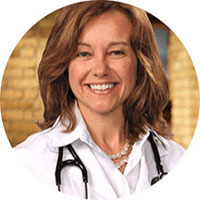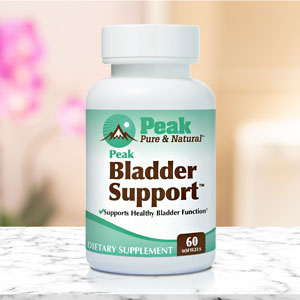Get Easy Health Digest™ in your inbox and don’t miss a thing when you subscribe today. Plus, get the free bonus report, Mother Nature’s Tips, Tricks and Remedies for Cholesterol, Blood Pressure & Blood Sugar as my way of saying welcome to the community!
Men: Keeping your heart health in midlife

We used to think of heart attacks and other forms of heart disease as something that happened primarily to older adults. No more.
Younger adults — especially men — are getting diagnosed with heart disease not only earlier but at rates that we’ve never seen before. Both genders are developing heart disease earlier, but because men typically develop heart disease about 10 years before women do, the ages at which some men are experiencing heart events can be shocking.
When I was in medical school, a heart attack in a 40-year-old man was quite rare. It sure isn’t rare anymore.
What’s behind all this?
People ages 35-64 are experiencing all-time high rates of obesity and Type 2 diabetes, which appear to be driving this change. Although smoking and cholesterol levels among Americans have dipped (partly because we’re vaping now and lots of people have been placed on statin drugs), obesity has steadily increased.
People with obesity are more likely to develop high blood pressure, a leading cause of heart disease and stroke, as well as a multitude of subtle and not-so-subtle metabolic abnormalities that drive inflammation, cause cholesterol abnormalities that statins can’t fix, and result in reduced blood vessel flexibility.
So if you’re a man in this age range who is starting to see the scale tip upwards or if you’re already heavier than you’d like, understand that your heart disease risk is accelerating and now is the time to double down on prevention efforts. Make sure you’re taking advantage of all the ways that nutrition and lifestyle can help keep ALL your risk factors in check. If you developed healthy habits in your younger years, now’s the time to continue. But if you didn’t, take heart knowing that it’s never too late!
If you have some conditions that put you at risk, learn more about those conditions (as a place to start, you’ll find lots of helpful information in our Blog section) and consult your doctor about managing them. For example, let’s look at high blood pressure and high cholesterol…
High blood pressure
Millions of Americans in their 40s and 50s have high blood pressure. But what puts you most at risk is uncontrolled high blood pressure readings. And how do you know if your blood pressure is uncontrolled? You have to measure it!
An inexpensive investment in your health is an automated home blood pressure cuff that you can find in any drug store (or pharmacy section of a grocery store or large retailer). They’re easy to use, typically quite accurate and can help you spot a problem well before your next formal checkup. Blood pressure readings vary during the day so one elevated reading does not mean you have high blood pressure. But if you’re seeing top numbers consistently over 130 and bottom numbers consistently over 85, schedule an appointment with your doctor to come up with a more formal monitoring and management plan.
And don’t forget that lifestyle factors can have a huge impact on BP control so the earlier you start optimizing those the less likely it is you end up on blood pressure-lowering drugs.
High cholesterol
If you have diabetes and/or obesity, if you smoke, if you eat unhealthy foods, or if you are sedentary, you are at risk of having poor cholesterol levels. Fortunately, you can control most of those risk factors and even undo the damage they have caused — if you act now.
It’s not as easy to check cholesterol at home so work with your provider to make sure you’re getting regular bloodwork at a frequency that makes sense based upon age and other risk factors. And if you get a high number, don’t panic. Unless you already have established heart disease, you don’t need to go on medications right away. Cholesterol is almost never an emergency.
And as we’ve proven at Step One, a change in diet can yield dramatic cholesterol improvements in 30 days, so it’s reasonable to try a dietary approach (even if you don’t choose to do Step One) before you commit to a lifetime of medications. Just make sure to test your cholesterol response to whatever dietary/lifestyle intervention you’ve decided to pursue. We’d never assume a drug is working without testing its effects. The same should be true for any food or lifestyle intervention.
Erectile dysfunction
As a middle-aged man, you should also be aware of a male-specific early potential warning sign of heart and vascular disease — erectile dysfunction (ED).
Not all ED means you have vascular disease, but if you’re starting to experience this, make an appointment with your physician and let them know. They might want to dig in deeper regarding heart disease risk and be more aggressive when controlling your risk factors. This is not about embarrassment — it’s about helping yourself experience your fullest, healthiest, longest life.
I’ll be back with advice for heart health in your 60s, 70s and beyond soon.














